Safety
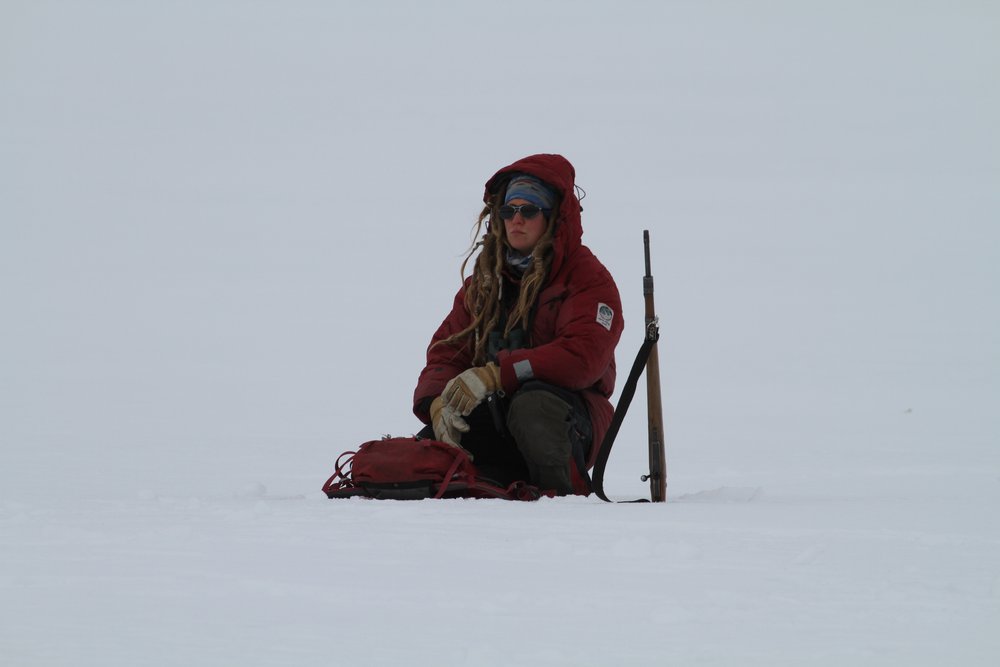
Of course, we all want to see that polar bear, but not one walking toward us. So we were all grateful for the protection even if it seemed a bit restrictive. Even if all I wanted to do was walk into the horizon, bear or not.

Of course, we all want to see that polar bear, but not one walking toward us. So we were all grateful for the protection even if it seemed a bit restrictive. Even if all I wanted to do was walk into the horizon, bear or not.



It was wonderful to see the birds so relaxed, sunning in the Arctic sun, waddling about, crossing the near-traffic-less road. Then I noted a fluttering at the edge of the encampment. There, a Glaucous Gull—one of our largest gulls—had taken an egg from a nest. The female tried to protect it, with no luck. And there was the gull, egg cracked open, feasting on the yolk of the Eider egg.
Maybe even the safest spots are not really so safe.
Hooded Crow in Oslo
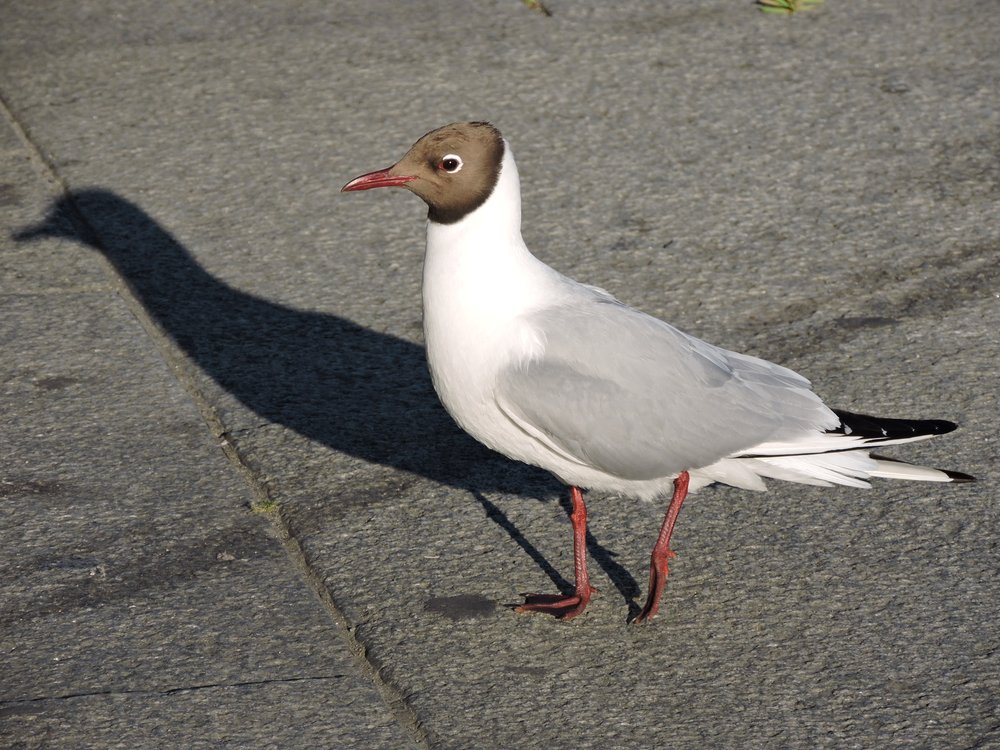
I arrived in Oslo this morning from the States. The first bird I saw (besides a pigeon—they don’t count) was a Hooded Crow. A few years ago a Hooded Crow—a decidedly European bird—appeared near a dumpster on Staten Island. There was enough excitement that I picked up and drove down to pay it a visit. Like many twitching events this one was a bit of a disappointment. The bird was mobbed by big lenses and crowds. The setting was potentially beautiful—the beach was right there—but overlooked in favor of focusing on the dumpster that the crow hoped might provide a meal. After I saw that one lone bird I wondered a lot about it. How had it arrived on our shores? Seems doubtful it flew. So perhaps it was trapped in a container ship and spent a week at sea. No wonder it had attached itself to the dumpster.

I arrived in Oslo this morning from the States. The first bird I saw (besides a pigeon—they don’t count) was a Hooded Crow. A few years ago a Hooded Crow—a decidedly European bird—appeared near a dumpster on Staten Island. There was enough excitement that I picked up and drove down to pay it a visit. Like many twitching events this one was a bit of a disappointment. The bird was mobbed by big lenses and crowds. The setting was potentially beautiful—the beach was right there—but overlooked in favor of focusing on the dumpster that the crow hoped might provide a meal. After I saw that one lone bird I wondered a lot about it. How had it arrived on our shores? Seems doubtful it flew. So perhaps it was trapped in a container ship and spent a week at sea. No wonder it had attached itself to the dumpster.

One of the many great pleasures of travel—besides the light at the tops of gleaming modern buildings, the water thrashed by the almost Arctic wind, the blond children jumping with glee into the cold water, the tall sailing ships in harbor—are the new birds. Every bird is new, a rarity, a treasure.
I walked the city today, through the park by the Imperial Palace (complete with guards), where Chaffinch greeted me. At the waterfront, there are many gulls—Herring, Black-backed, Black-headed. There are the numerous Pied wagtails that hop between tables as I share a dinner of moules frites with David Freese, a photographer who will be a part of the expedition I am about to embark on with the Arctic Circle, an organization that brings together a range of 
But really, what I am asking is, how do any of us end up where we do? How is it that I am here in Oslo hoping the sun dips just a little further so that I can sleep? How did I get so lucky as to be heading toward a ship and ice and who knows what adventures?
Snapping Turtle Tradition
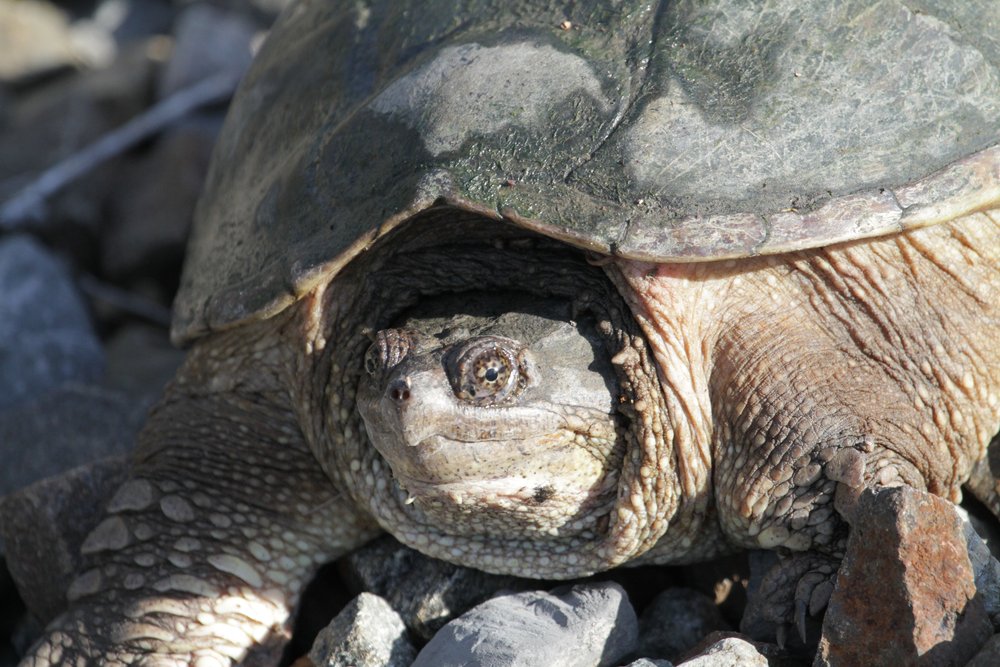
I prepared for snapping turtle week by buying a fishing net. As I left Gander Mountain someone called to me: “butterflies?”—those would be some butterflies!
“Nope, Snapping turtles,” I called back, cheerful.
He rolled his eyes.

I prepared for snapping turtle week by buying a fishing net. As I left Gander Mountain someone called to me: “butterflies?”—those would be some butterflies!
“Nope, Snapping turtles,” I called back, cheerful.
He rolled his eyes.
 my finest rescue techniqueBecause snappers travel to lay their eggs, they cross roads and railroad tracks—and often are crushed. Already I had clumsily shoved a turtle across a road, the turtle snapping, four or five of us offering suggestions, stopping or slowing cars, and from time to time screaming in surprise when the turtle lunged with a snap. The net was the solution to all of my turtle rescuing problems.
my finest rescue techniqueBecause snappers travel to lay their eggs, they cross roads and railroad tracks—and often are crushed. Already I had clumsily shoved a turtle across a road, the turtle snapping, four or five of us offering suggestions, stopping or slowing cars, and from time to time screaming in surprise when the turtle lunged with a snap. The net was the solution to all of my turtle rescuing problems.
Last year, I stumbled on the maternity ward of snappers along the train tracks that slice the North Tivoli Bay from the main artery of the Hudson River. There, in the black gravel laid as foundation for the tracks the snapping turtles can easily dig, then the sun warms the eggs beautifully. On June 6 of last year, I saw dozens of turtles digging, and rescued one caught between the rails. The next day, dozens of turtles lay crushed, mangled by the trains barreling north and south. This year, I was going to save as many turtles as possible.
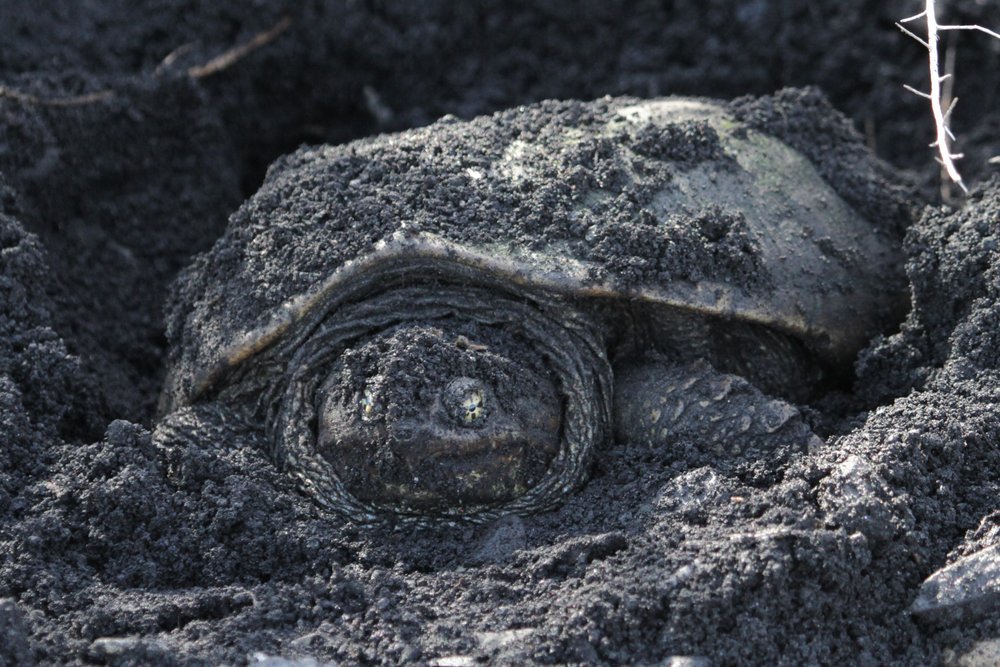
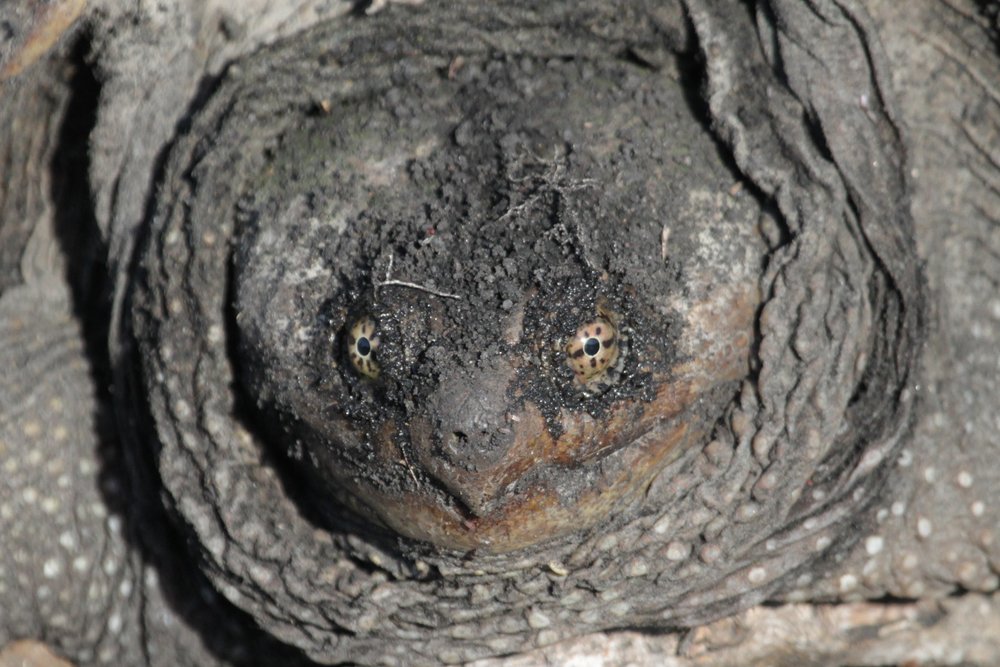
Further up the track it was a regular egg laying fest. Over twenty nests had been dug and raided—no doubt by raccoons. Shreds of the eggs littered the disturbed holes, the white so white against the black soil. But over a dozen lady snappers were still in holes, quietly laying their round, white eggs. Three had gathered near to each other, hind ends burrowed deep in the soil. When we returned half an hour later, one was gone—and her nest already empty. How quickly the thief works!
And yet--though the raccoon was hard at work, we saw no turtles crushed by the steel wheels of the train. This, a small relief.
We stopped for tea and sticky buns brought by Kate from the Tivoli Bakery—for any tradition to be a success, good food is essential—and watched barn swallows wing in and out under the underpass.
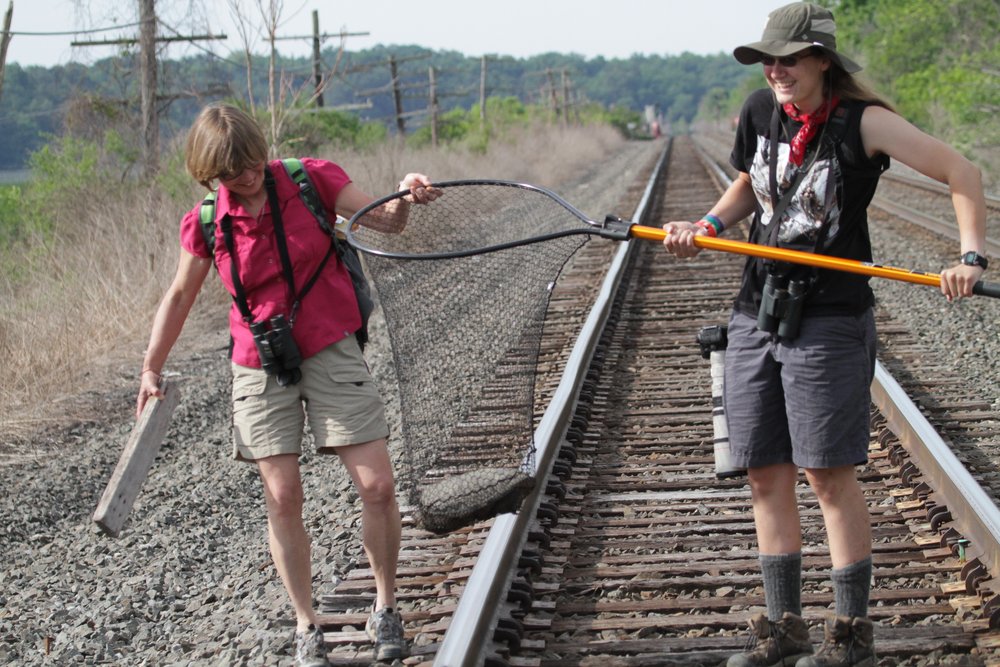
Does saving two snapping turtles make a difference? Maybe, but maybe not. It is comforting but naïve to think that every little bit helps—because in the face of our environmental problems this doesn’t even register. What matters, though, is that saving these turtles is what I can do, it’s what I do. It’s one of my traditions.
Baby Beaver


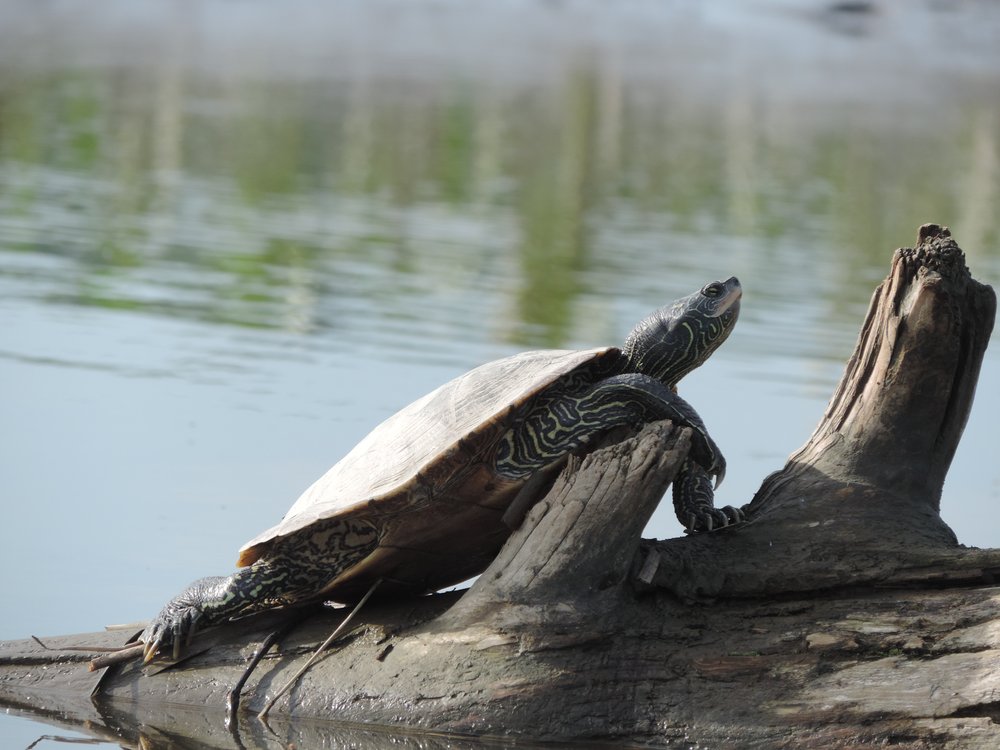
In the distance, I saw the tell-tale V of a beaver plowing through the water. In 1840, the beaver was a rare animal in New York State. Trapping had all but wiped out this large rodent, whose pelts were used for hats and coats. When trapping was finally prohibited in 1895, some claim there were but 10 left in the State. In the North Tivoli Bay, it is hard to believe this desperate history: I always see a beaver. Or rather, I hear a slap of a broad tail, signaling danger before the beaver dives below the surface.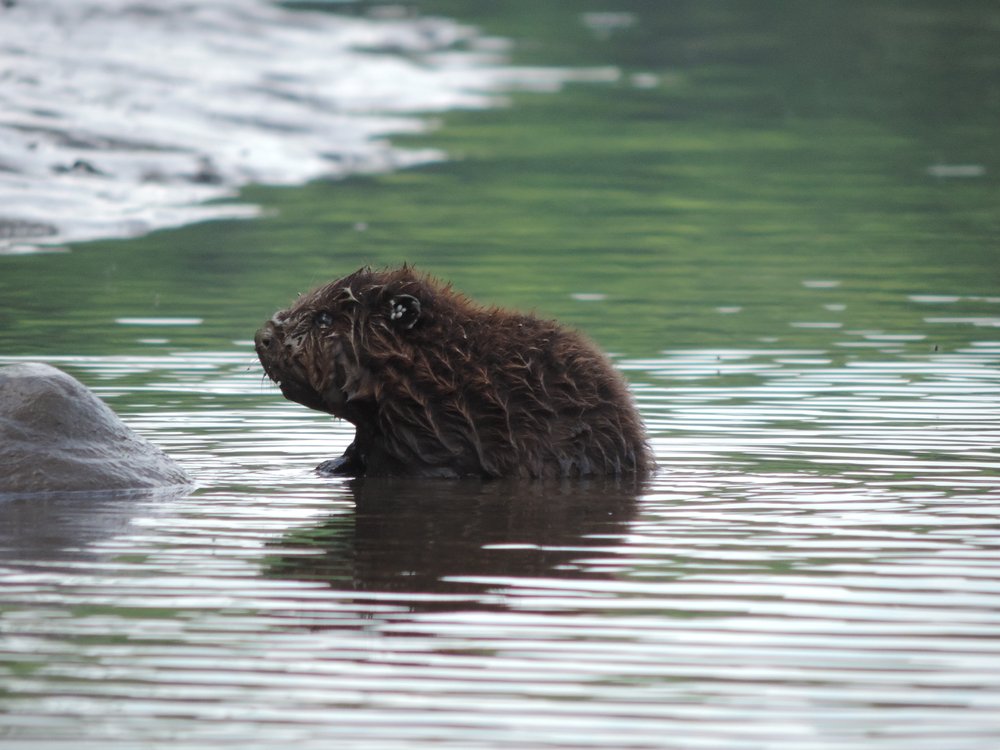
I guessed it was lost. Across the channel rested a stick pile, a beaver lodge. I moved my boat to the middle of the channel thinking the little beaver might swim to me once again and this would get it closer to home. It did. And I had the foresight to turn on the video in my pocket camera. And sure enough, after it rounded the stern of my boat, the baby beaver swam off toward the lodge. Watch the video here.
Full of optimism, I paddled home.